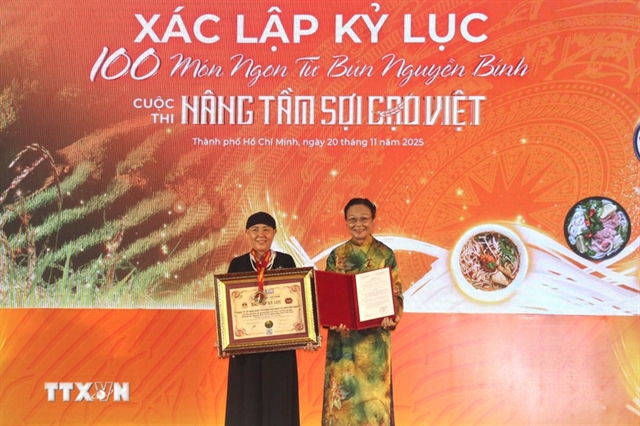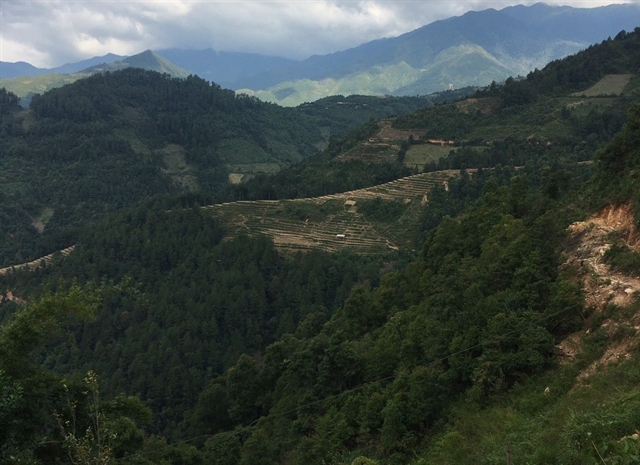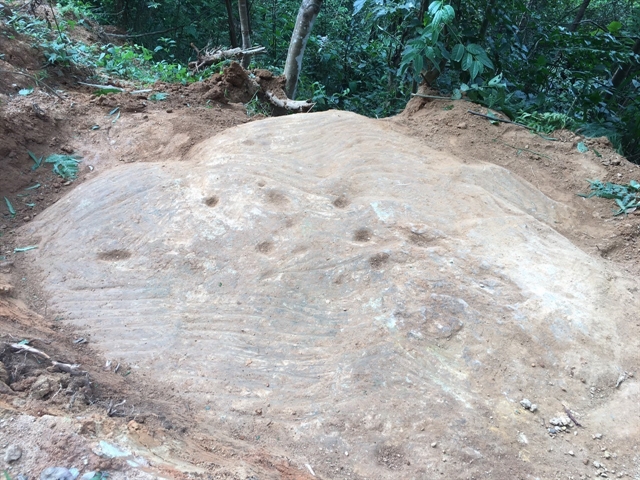 Life & Style
Life & Style

 |
| Ancient carved stone blocks have been discovered in the protection forest of Háng Chua Say Village, Chế Cu Nha Commune, Mù Căng Chải District. VNA/VNS Photo |
YÊN BÁI — A team of specialists has been working in Háng Chua Say Village, Chế Cu Nha Commune, Mù Cang Chải District to analyze and interpret the mysterious stone blocks found in this area, according to Hoàng Tiến Long, Director of the Yên Bái Provincial Museum.
These ancient carved stone blocks were discovered in the protection forest, about 4km from the headquarters of the Commune People's Committee.
They are spaced between 7 and 80m apart and have sizes ranging from 1 to 20 cu.m. Among them is a massive, carved stone slab that is over 2m in length and almost the same in breadth.
Experts believe the engravings on these stone blocks are highly detailed and resemble terraced fields, which are similar to ancient carved stone blocks found in Lao Chải Commune, Mù Cang Chải District in 2015, 2020, and 2021.
 |
| Terraced fields are shown in engravings on ancient stone blocks that have recently been found in Mù Cang Chải. VNA/VNS Photo |
The ancient carved stone blocks in the Chế Cu Nha Commune differ from others previously discovered in that they include convex concentric rings and concave diamond patterns.
These may be the inscriptions of the indigenous Mông people, say experts at the Yên Bái Provincial Museum.
Typically originating in the 16th or 17th century, these works depict terraced fields in either design or painting.
According to Lý Kim Khoa, the Deputy Director of the Yên Bái Provincial Museum, this is neither a landmark sign nor a graphical design, as mostly assumed.
The recent discovery of old carved stone blocks in the two communes of Chế Cu Nha and Lao Chải, according to Khoa, has increased the possibilities for studying and cataloguing such artefacts in the Mù Cang Chải area.
It also provides the scientific foundation for the expansion of the tourist sector in combination with terraced fields and the Mù Cang Chải ornamental species conservation area. VNS




